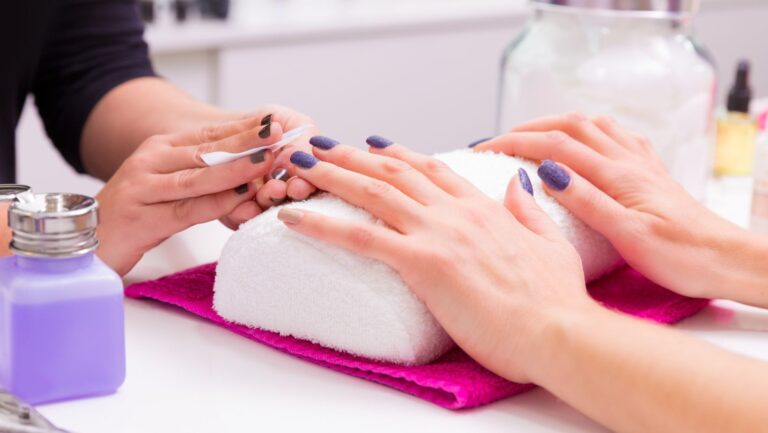Setting the right prices for your nail salon is a delicate balance between attracting clients and ensuring profitability. Many salon owners struggle with pricing, either charging too little and sacrificing profits or pricing too high and losing customers to competitors. Effective nail salon pricing requires regular market research, understanding your unique selling points, and calculating your true costs to maintain a healthy profit margin.
Successful pricing strategies involve more than just matching competitors or making random adjustments. A comprehensive approach includes categorizing your services, considering your salon’s positioning, and recognizing the value you provide to clients. Using a nail studio business management system, for example, can help track costs, monitor service profitability, and adjust prices based on actual performance data.
The most profitable salons review and adjust their prices regularly, typically every 6-12 months. This practice ensures prices reflect current market conditions, rising supply costs, and the growing expertise of your nail technicians. By implementing strategic pricing tiers for different service levels, you can appeal to various client segments while maximizing revenue opportunities across your business.
Key Takeaways
- Regular market research and competitive benchmarking are essential for establishing profitable nail salon prices.
- Pricing should reflect your salon’s unique value proposition, actual costs, and desired profit margins.
- Implementing service categories and tiered pricing helps attract different client segments while optimizing overall revenue.
Understanding Your Nail Salon’s Market Position
Establishing the right market position for your nail salon requires careful analysis of your local competitive landscape and customer needs. A well-defined position helps you set prices that reflect your salon’s true value while remaining attractive to your target clientele.
Conducting a Thorough Market Analysis
Market analysis forms the foundation of your pricing strategy. Begin by researching the economic demographics of your location, including average income levels and spending habits related to personal care services.
Identify trends that affect the nail care industry in your area. This might include seasonal fluctuations in demand or emerging service preferences like eco-friendly products or specialized nail art techniques.
Gather data on the overall size of your potential market. How many people in your service area regularly visit nail salons? What’s the typical frequency of visits? This information helps determine whether your market can support your business at your desired price points.
Use tools like surveys, social media polls, and direct conversations with potential clients to gauge their expectations about pricing and service quality. This primary research proves invaluable for understanding local market conditions.
Identifying Your Target Market
Define who your ideal clients are with specific characteristics rather than broad demographics. Consider factors like age, occupation, lifestyle, and disposable income.
Segment your target market into distinct groups based on their service preferences and price sensitivity. Some clients might prioritize luxury experiences and are willing to pay premium prices, while others seek value and basic services.
Understand the purchasing behaviours of your target market. Do they prefer package deals, loyalty programs, or à la carte services? This knowledge directly influences how you structure your pricing menu.
Map the customer journey from awareness to becoming a regular client. Identify which touchpoints and services matter most to your target audience, allowing you to allocate resources and adjust pricing accordingly.
Evaluating the Competition
Identify direct competitors (other nail salons) and indirect competitors (spas, beauty salons with nail services, mobile technicians) in your area. Create a comprehensive list including their locations relative to yours.
Analyze competitor pricing structures in detail. Note their base prices, premium service offerings, special promotions, and package deals. This provides a benchmark for positioning your own prices.
Assess the quality of their services through reviews, social media feedback, and, if possible, firsthand experience. This helps you understand the relationship between price and perceived value in your market.
Evaluate competitors’ brand reputation, ambiance, and clientele. Does a competitor serve high-end clients with premium pricing, or do they focus on high-volume, lower-priced services? Identifying these gaps helps position your salon effectively.
Assessing Your Unique Selling Proposition
Identify what makes your nail salon truly different from others. This could be specialized techniques, exclusive products, exceptional customer service, or a distinctive salon atmosphere.
Quantify the value of your differentiators. If you use premium products that last longer or provide health benefits, calculate how this translates to value for clients. This justifies potential price premiums.
Connect your USP directly to your target market’s needs and wants. Your unique attributes should address specific pain points or desires that your ideal clients experience.
Test market response to your USP before finalizing your pricing strategy. Soft launches or limited-time promotions can help gauge whether clients truly value your differentiators enough to support your desired price points.
Developing a Strategic Pricing Model
Creating a strategic pricing model combines financial analysis with customer psychology to establish rates that cover costs while generating healthy profits. Your pricing strategy should reflect both the value you deliver and the market realities you face.
Calculating Cost Per Service and Overhead Expenses
Start by meticulously tracking all costs associated with each service. Calculate the product cost per service by measuring how much of each product is used during a specific treatment. For example, a basic manicure might use 5 ml of polish at $0.50, plus cuticle oil and other materials totaling $2.25.
Labor costs must include not just the service time but also preparation and cleanup. A 45-minute gel manicure with 10 minutes of prep/cleanup equals 55 minutes of technician time.
Overhead expenses include rent, utilities, insurance, and administrative costs. Divide your monthly overhead by the number of service hours to find your overhead cost per hour.
Create a simple equation:
Total service cost = Direct materials + Labour cost + (Overhead per hour × Service duration)
This calculation forms the foundation of your minimum pricing threshold.
Setting Profit Margins and Sales Volume Targets
Establish clear profit margin goals for different service categories. Premium services like nail art or specialized treatments can command higher margins (40-60%), while basic services might have lower margins (25-35%).
Consider using a tiered profit structure:
- Essential services: 25-30% margin
- Standard services: 30-40% margin
- Premium/specialty: 40-60% margin
Sales volume targets should align with your salon’s capacity and booking patterns. Track these metrics weekly:
- Average service value
- Services per day
- Booking rate percentage
- Revenue per hour
Adjust margins based on how frequently services are booked. Popular services with high demand can maintain stronger margins, while less popular treatments might need margin adjustment to increase volume.
Implementing a Dynamic Pricing Structure
Dynamic pricing adjusts rates based on demand periods, helping maximize revenue during peak times while attracting clients during slower periods. Consider implementing time-based variations:
Peak/Off-Peak Pricing:
- Weekday mornings (10-25% discount)
- Weekend appointments (standard or premium rate)
- Evening rush hours (potential 10-15% premium)
Create seasonal promotions that reflect natural demand fluctuations. During winter, package deals on moisturizing treatments address seasonal nail issues while maintaining profitability.
Test price elasticity by making small adjustments (5-10%) and monitoring booking patterns. Some services have higher elasticity than others, allowing for strategic pricing decisions.
Clearly communicate your pricing structure using digital menu boards or apps that can be updated easily when adjustments occur.
Incorporating Customer Loyalty and Retention Strategies
Develop a tiered loyalty program that rewards consistent patronage without sacrificing profitability. Structure rewards based on visit frequency rather than discounts alone:
- Silver tier: After 5 visits, receive a free basic add-on service
- Gold tier: After 10 visits, 15% off any premium service
- Platinum tier: After 20 visits, exclusive access to new treatments
Calculate customer lifetime value to determine appropriate loyalty investments. If your average client visits monthly, spending $75 per visit, their annual value is $900. Investing 5-8% in retention strategies makes financial sense.
Implement a referral program offering both the referrer and new client incentives. Track referral conversion rates to measure program effectiveness.
Bundle complementary services at a slight discount to increase the average ticket size. For example, a manicure paired with a paraffin treatment might offer a 10% savings while increasing overall revenue.
Conclusion
Setting profitable nail salon prices requires balancing your business costs with market expectations. The most successful salon owners regularly review their pricing strategy, adjusting based on competitor analysis, service costs, and client feedback.
Remember that your prices reflect your salon’s brand identity and the quality of your services. Strategic pricing not only ensures your financial sustainability but also positions your salon appropriately in the marketplace.
A tiered pricing system based on service complexity, technician experience, and premium products can help maximize revenue while providing options for different client budgets. With thoughtful pricing strategies in place, your nail salon can thrive in today’s competitive beauty industry.






